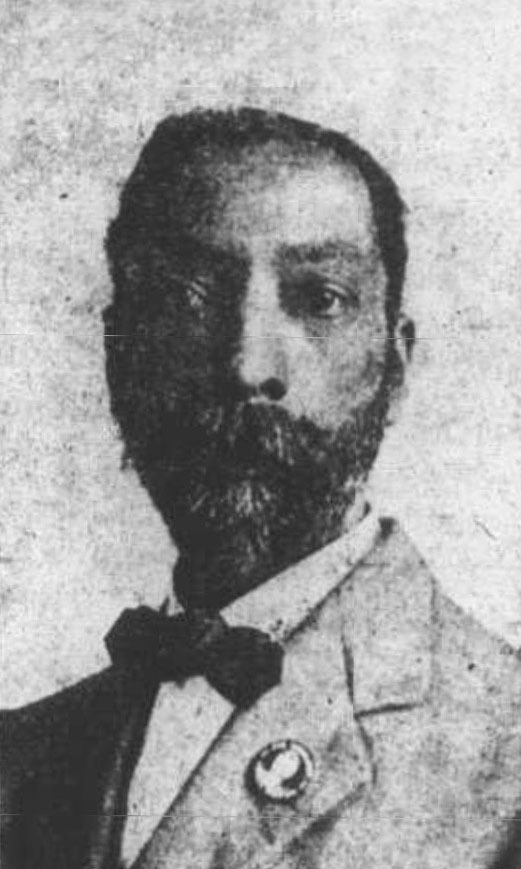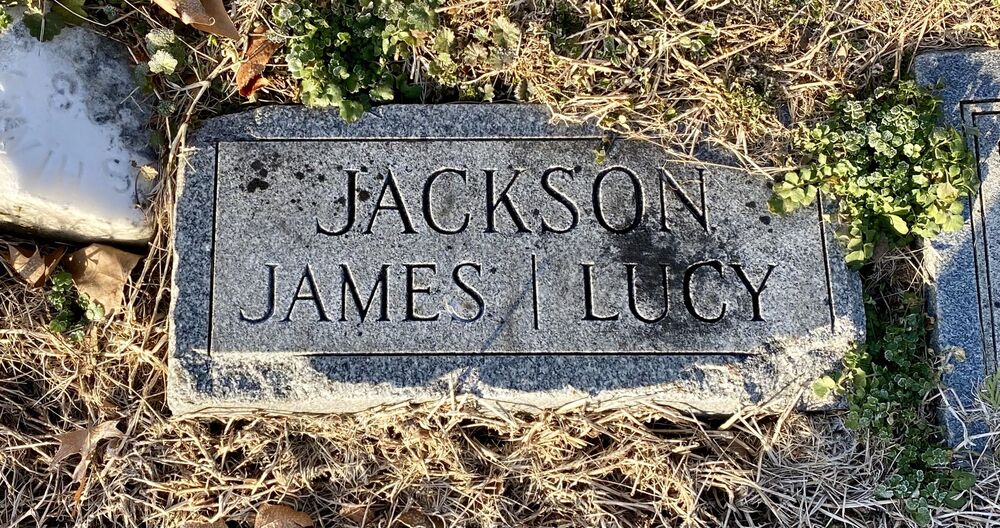Gravesite of James E. Jackson
Builder and architect who fought discrimination

In the 1890’s, James E. Jackson became well-known in Cincinnati as a carpenter, builder, and contractor. Several documents also refer to him as an architect, making him one of the first Black architects in Cincinnati.
James E. Jackson was part of a tradition of Black practical builders that included individuals such as Peter Harbeson, Stephen Evans, and Philip B. Ferguson. These men were not formally trained in architecture. The State of Ohio did not pass a law requiring specific training and licensure for architects until 1929.
During this early period, James E. Jackson assumed the role of architect on some of his projects. In 1896, an article in the Cincinnati Times Star discussed the renovation of the club rooms of the Douglass Club, reporting that, “All of the work was done by Douglass League men, under the personal supervision of Architect J. E. Jackson.”
In 1907, a well-to-do Black woman named Minerva Wilson hired James E. Jackson to enlarge and renovate her commercial building (now gone) on Lincoln Avenue in Walnut Hills. The magazine Western Architect and Builder reported that a building permit had been issued to J. E. Jackson as “architect and contractor” for a two-room addition plus exterior work, cladding the building in tile.
In 1918, the US Government began construction of a factory at Ancor, Ohio, to produce nitroglycerine, an explosive, for the First World War. That October, the United States Employment Service placed help-wanted advertisements in the Cincinnati Enquirer for construction workers.
In November 1919, The Union newspaper reported that James E. Jackson had traveled to Ancor taking fifteen carpenters with him. Government officials at Ancor stated that they would be willing to hire African Americans only as unskilled laborers and would not recognize them as skilled trades workers.
Refused employment at the level he deserved, Jackson then “went to West Virginia with ten men, got them all placed at splendid wages, and had them admitted to the union.” In West Virginia, Jackson took the Civil Service examination, passed with high marks, and became a housebuilder for the Navy in Charleston, West Virginia, earning the salary of $2,800 a year.
In February 1919, The Union newspaper reports: “Mr. Jas. E. Jackson, formerly a well-known contractor of this city, is making good as an attache of the U. S. Navy Department in Charleston, W. Va. He is the only colored member of the Building Trade Council of that city and the Central Labor Union.”
James E. Jackson stayed in West Virginia through 1928. By 1930, he had returned to Cincinnati and was living in the household of a younger relative named Edward Birch – who was also an architect.
Edward Birch and his brother Ernest were both architects. They worked together for a time and are generally regarded as the first Black architectural firm in Cincinnati. James E. Jackson’s influence may have helped pave the way for them.
James E. Jackson died in Batavia, Ohio, on December 13, 1934. His obituary says that he “comes from a family long noted in civic and industrial movements.” He was buried in Union Baptist Cemetery.
Images

